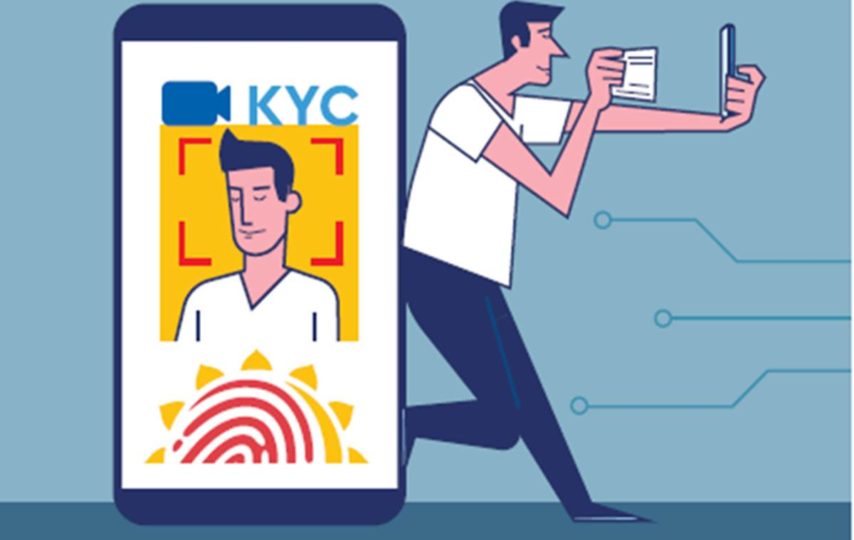Customer onboarding has been a challenge for most banks and financial institutions during this lockdown. The rise of fintech and digital wallets has prompted inclusion on the massive Indian population including the rural areas. And it has become imperative for businesses to find a solution that can allow them to onboard customers without their physical presence.
To make contactless banking a reality, RBI has recently launched its guidelines to allow video-based KYC for banks and FIs, lending companies, insurers, and prepaid wallet players. After the Supreme Court’s guidelines to declare the use of Aadhar based e-KYC as unconstitutional for private players, it became a hanging sword for them as the physical KYC involves a lot of documentation work and demands physical presence.
The latest RBI guidelines for Video KYC solution may have come in January 2020 but has become very relevant for the country that is hard hit by COVID-19 pandemic.
So, what is Video KYC?
Video KYC process has simplified the customer onboarding journey. It is a simple process that does the background verification for each customer and helps engage with them over a short video call.
The customers can raise a Video KYC request and a Regulated Entity (RE) official will initiate a two-way video call to authenticate and verify the customer’s identity. The RE official will then take the screenshots of the customer’s face, PAN card, and Aadhar card provided by the customer after receiving consent from the customer.
The video recording is stored on the server which is then verified by the auditor. The customers are notified of the status of their KYC approval.
Why Video KYC is important for Banks and FIs?
Video-based KYC provides ease of authentication and eliminates the fraudulence with its liveness check, geotagging, and Ai-driven face-matching technology.
Faster Onboarding: What used to be a 5-7 days long process has now come down to 3 minutes with the Video KYC solution. Lending companies can scale easily and onboard more customers in less time while they reach out to customers in remote locations and complete the onboarding process virtually.
Cost-Effective: Now, banks, FIs, and lending companies that are starting off do not have to invest in biometric technology, sending a field agent to the customer’s place, burn a hole in the pocket because of travel and documentation costs involved in the customer onboarding process. With video as an engagement channel, they can reduce the customer onboarding cost by 90% without investing anything in the hardware technology.
Zero Fraudulence: Cyber attackers have been becoming more sophisticated with the advent of new technology and banks have often been challenged with tampered documentation, fraudulent identity, and money laundering. Now they can easily do away with the fraudulence, the video-based KYC process uses AI-driven face recognition technology which is backed by two-level authentication.
There’s also a liveness check done by the RE official where he/she can ask a random question to ensure that the customer has not produced a pre-recorded video.
Amazing Customer Experience: Now, customers aren’t willing to step out of their comfort for their identification. More so when the world is hit by COVID-19 pandemic and they are practically forced to stay at home. And the customers are also not willing to touch the same biometric glass that has been touched by multiple people.
So, they need comfort and you’ve got them covered with video KYC. Customers can now request for a SIM card, opening a new account, or ask for a new credit card issuance without having to physically visit the bank or SIM card store. They can easily complete their verification process at home and their documents will be delivered at their requested address.
Enterprise-grade Security: Video KYC process has to be 100% RBI and SEBI compliant. One additional advantage is that none of the video records or customer’s information can be tampered with, the RE officials need to save the data in a secured manner along with the customers’ KYC information that bears date and stamp.
Supervisory Model: The managers and supervisors can check the video KYC data in real-time and ensure the accuracy and correctness of the KYC completion process. With the statistical overview of the KYC abandoned, KYC completion, officer SLA, auditor SLA can allow the supervisors to keep track of important metrics and make well-informed decisions.
High Customer Adoption Rate: Due to physical KYC, there was a high customer onboarding drop off rate which can further be reduced by 20% with the implementation of a Video-based KYC solution. It takes very little time to complete the KYC over a video call and needs a low internet bandwidth which means that the customers won’t have a bad experience and they would like to continue with the business services like opening an account online.








